What is Design?
Design is the process of creating a plan or a model to solve a problem or achieve a specific goal. In science, design often involves creating experiments, building models, or developing solutions to real-world problems.
Types of Designs
There are different types of designs, including:
- Experimental Design: Involves planning and conducting experiments to test hypotheses and answer scientific questions.
- Engineering Design: Involves creating solutions to real-world problems by applying scientific and mathematical principles.
- Graphic Design: Involves creating visual representations of ideas and concepts, often used in presenting scientific information.
The Design Process
The design process typically involves the following steps:
- Identify the Problem: Clearly define the problem or objective that the design aims to address.
- Research and Brainstorm: Gather information and generate ideas for possible solutions or designs.
- Plan and Create: Develop a detailed plan or model based on the chosen solution or design concept.
- Test and Evaluate: Conduct tests or experiments to determine the effectiveness of the design and make any necessary revisions.
- Communicate Results: Present the findings and outcomes of the design process, often through written reports, presentations, or visual displays.
Examples of Design in Science
Students can explore design in science through various activities, such as:
- Building and testing a bridge to understand the principles of structural engineering.
- Creating a model of the water cycle to demonstrate the movement of water through different states of matter.
- Designing and conducting an experiment to investigate the effects of different variables on plant growth.
◂Science Worksheets and Study Guides Third Grade. Hands-on Lab Skills/Science Inquiry - 3rd grade
Study Guide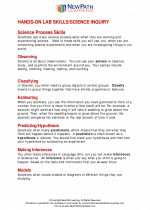 Hands-on Lab Skills/Science Inquiry - 3rd grade
Hands-on Lab Skills/Science Inquiry - 3rd grade  Worksheet/Answer key
Worksheet/Answer key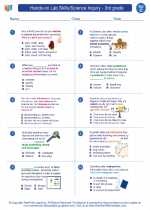 Hands-on Lab Skills/Science Inquiry - 3rd grade
Hands-on Lab Skills/Science Inquiry - 3rd grade  Worksheet/Answer key
Worksheet/Answer key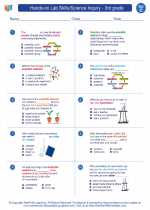 Hands-on Lab Skills/Science Inquiry - 3rd grade
Hands-on Lab Skills/Science Inquiry - 3rd grade  Worksheet/Answer key
Worksheet/Answer key Hands-on Lab Skills/Science Inquiry - 3rd grade
Hands-on Lab Skills/Science Inquiry - 3rd grade  Worksheet/Answer key
Worksheet/Answer key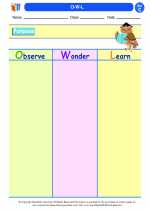 O-W-L
O-W-L  Vocabulary/Answer key
Vocabulary/Answer key Hands-on Lab Skills/Science Inquiry - 3rd grade
Hands-on Lab Skills/Science Inquiry - 3rd grade  Vocabulary/Answer key
Vocabulary/Answer key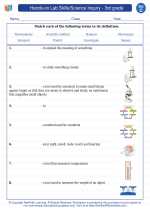 Hands-on Lab Skills/Science Inquiry - 3rd grade
Hands-on Lab Skills/Science Inquiry - 3rd grade 

 Worksheet/Answer key
Worksheet/Answer key
 Worksheet/Answer key
Worksheet/Answer key
 Worksheet/Answer key
Worksheet/Answer key
 Worksheet/Answer key
Worksheet/Answer key
 Vocabulary/Answer key
Vocabulary/Answer key
 Vocabulary/Answer key
Vocabulary/Answer key

The resources above cover the following skills:
Science as Inquiry and Process: A student should understand and be able to apply the processes and applications of scientific inquiry. A student who meets the content standard should:
Develop an understanding of the processes of science used to investigate problems, design and conduct repeatable scientific investigations, and defend scientific arguments.